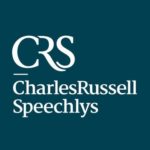Continue reading "Wills: The prodigal daughter?"
Wills: The prodigal daughter?

The Brindle Estate near Chorley belonged to Patience Aspinall, who died in 1985. The Estate passed to her sister Honour Ruth (‘Miss Aspinall’) as her executor and sole beneficiary. In the early 1990s, the Brindle Estate was subject to compulsory purchase for the construction of the M65 motorway over the northern part. By February 1994, the Department of Transfer had entered upon the land for the purpose of commencing construction. Miss Aspinall received interim payments on account of the compensation payable to her arising from construction of the M65, in particular, £46,727 in October 1...

Continue reading "Wills: The prodigal daughter?"

Continue reading "Wills: Flexible interpretation"

Continue reading "Wills: The law of unintended consequences"
This was a claim to construe a will or, in the alternative to rectify it. Mr Michael Crowley-Milling (the deceased) died on 24 December 2012. His wife had pre-deceased him and he was survived by one niece, Mrs Lorna Joy Robinson and the children of his other niece (who had predeceased him) James Masterman and Rebecca Masterman (the next of kin). The deceased was a distinguished scientist and had decided to leave the bulk of his estate to the Royal Society.
The deceased left two wills: a Swiss will from February 2006 (the Swiss will) and an English will from October 2009 (the 2009 ...
The claimants (the executors of the estate of Mr Jagger) applied for construction or alternatively rectification of the last will of Mr Jagger dated 10 June 2011 (the 2011 will). It was common ground that the 2011 will was valid and revoked an earlier will dated 5 April 2007 (the 2007 will).
Mr Jagger made the 2011 will following the death of two of his sons from his first marriage. It was professionally drafted. Under the 2007 will his second wife received a life interest in the matrimonial home. The 2011 will represented a departure from this intention.
The 2011 will cont...
The claimant was a friend and business colleague of Philip Hopkins, and the executor and main beneficiary under Mr Hopkins’ will dated 6 June 2014. The will draftsman, a partner in a law firm, attended Mr Hopkins at his home with two members of the firm’s staff who witnessed his signature. During the execution of the will, she noticed that Mr Hopkins was unwell and later that day he was readmitted into hospital. He died ten days later on 19 August 2014, having been diagnosed with unspecified alcoholic liver damage.
The claimant brought a claim to prove the validity of the 2014 wil...
B C
Continue reading "Wills: Crossing a line"

Continue reading "Wills: Pub talk"
Michael and Philip Noble were brothers who built up a substantial property empire known as the Noble Organisation. It had a complex ownership and management structure involving a number of companies and partnerships and certain trusts for the benefit of their respective families. Michael died in 2006. The executors were Philip, his widow Gillian, and John Barnsley (an accountant associated with PricewaterhouseCoopers). There was a demerger of the business side and property side of the Noble Organisation with Philip taking the business assets and Gill taking the property assets. This was ...